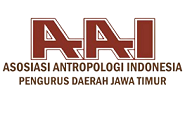The description on the effects of alcoholism in relation to the university students' academic progression
Downloads
This study was done so as to determine how the effects of alcoholism among university students can affect their academic progression. Survey Research Design was employed during data collection, within a sample of 300 respondents, who were obtained through purposive sampling technique. Questionnaires were distributed to 290 students because they live with/among the addicted students; while interviews were also done to 10 students and lecturers because they have clear details concerning the addicted student, who have encountered hindrances on academic matters due to alcoholism. The obtained data are presented in tables, showing frequencies and percentages of each item, while others are explained as theories, concepts and views. For those cases, alcoholism among university students has been proven to be accompanied with unsafe sexual practices, which results into unwanted pregnancies and STDs like gonorrhea, syphilis, UTI, HIV/AIDS, etc. Due to alcoholism, most of students have been involved in accidents and injuries, which make them ill and not attend lectures. Some have developed kinds of aggressive behaviors that makes them indiscipline and violent. Such factors hinder their academic prosperity due to failing in exams, attaining low GPAs, prosponding the semester(s) due to financial crisis after squandering school fees, and being incompetent within their profession. Then if so, universities should set strategies and techniques in order to educate the fresh year students who have not been addicted. Rehabilitation counselling should take part to eliminate alcohol dependency on their students. And lecturers should use professional skills to ensure all students attend lectures.
Ansari WE, Stock C, & Mills C (2013) Is alcohol consumption associated with poor academic achievement in university students?. International Journal of Preventive Medicine 4 (10):1175–1188.
Avedian A (2014) Survey design. [Accessed March 13, 2022]. http://hnmcp.law.harvard.edu/wp-content/uploads/2012/02/Arevik-Avedian-Survey-Design-PowerPoint.pdf
Babor TF, Caetano R, Casswell S, Edwards G, Giesbrecht N, Graham K, Grube JW, Hill L, Holder H, Homel R, Livingston M, Österberg E, Rehm J, Room R, & Rossow I (2010) Alcohol: No Ordinary Commodity: Research and Public Policy (2nd edition). Oxford: Oxford University Press.
Beck A & Heinz A (2013) Alcohol-related aggression”social and neurobiological factors. Deutsches Arzteblatt International 110 (42):711–715.
Brust JCM (2005) Alcoholism. In: LP Rowland (Ed.). Merritt's Neurology (11th edition). Philadelphia: Lippincott Williams & Wilkins.
Castaño-Perez GA & Calderon-Vallejo GA (2014) Problems associated with alcohol consumption by university students. Revista Latino-Americana de Enfermagem 22 (5):739–746.
Centers for Disease Control and Prevention (2010) Alcohol and public health: Frequently asked questions. [Accessed February 18, 2022]. https://www.cdc.gov/alcohol/faqs.htm.
Edwards G & Arif A ("Ž1980) Drug problems in the sociocultural context: a basis for policies and programme planning / edited by Griffith Edwards and Awni Arif. Geneva: World Health Organization.
Fingerhood MI (2007) Alcoholism and Associated Problems. In: NH Fiebach, LR Barker, JR Burton, & PD Zieve (Eds.). Principles Of Ambulatory Medicine (7th edition). Philadelphia: Lippincott Williams & Wilkins.
FinScope Tanzania (2017) Iringa regional report: Insights that drive innovation. [Accessed March 13, 2022]. https://www.fsdt.or.tz/wp-content/uploads/2018/11/Finscope_Iringa.pdf.
Girling M, Huakau J, Casswell S, & Conway K (2006) Families and Heavy Drinking: Impacts on Children's Wellbeing: Systematic Review. Wellington: Families Commission.
Horton P (1974) The Sociology of Social Problems. Englewood Cliffs, New Jersey: Prentice Hall, Inc.
Iconis R (2014) Understanding alcohol abuse among college students: Contributing factors and strategies for intervention. Contemporary Issues in Education Research 7 (3):243-248.
Iringa Municipal Council (2017?) The Five Year Strategic Plan 2016/2017 to 2020/2021. Iringa: The United Republic of Tanzania, Prime Minister's Office Regional Administration and Local Government. [Accessed March 14, 2022]. https://iringamc.go.tz/storage/app/uploads/public/5b7/f96/cc0/5b7f96cc06601004013361.pdf.
Leonard KE (2005) Alcohol and intimate partner violence: When can we say that heavy drinking is a contributing cause of violence?. Addiction 100 (4):422–425.
Lohr M (2005) Selysiothemis nigra (VANDER LINDEN, 1825) new for Portugal (Anisoptera: Libellulidae). Notul. Odonatol 6 (6):53-68. DOI 10.13140/2.1.2801.2482.
Mathers N, Fox N, & Hunn A (2009) Surveys and Questionnaires. Nottingham: The NIHR RDS for the East Midlands.
Matheson FI, White HL, Moineddin R, & Dunn JR (2012) Drinking in context: the influence of gender and neighbourhood deprivation on alcohol consumption. Journal of Epidemiolical Community Health 66:e4.
Mayor S (2001) Alcohol and drug misuse sweeping the world, says WHO. British Medical Journal 322:7284.
Miles MB, Huberman AM, & Saldana J (2014) Qualitative Data Analysis: A Methods Sourcebook. Thousand Oaks, CA: SAGE.
Myadze TI & Rwomire A (2014) Alcoholism in Africa during the late twentieth century: A socio-cultural perspective. International Journal of Business and Social Science 5 (2):1-9.
Onyebuchukwu IJ, Sholarin MA, & Emerenwa ABC (2015) The effect of alcohol consumption on the academic performance of undergraduate students. Psychology and Behavioral Sciences 4 (4):147-153.
Owens LK (2002) Introduction to survey research design: SRL Fall 2002 seminar series. [Accessed March 13, 2022]. https://www.srl.uic.edu.
Parrott DJ & Eckhard CI (2018) Effects of alcohol on human aggression. Current Opinion in Psychology 19:1-5.
Perkins HW (2002) Surveying the damage: A review of research on consequences of alcohol misuse in college populations. Journal of Studies on Alcohol 14:91-139.
Presley CA & Pimentel ER (2006) The introduction of the heavy and frequent drinker: A proposed classification to increase accuracy of alcohol assessments in postsecondary educational settings. Journal of Studies on Alcohol and Drugs 67:324–31.
Rehm J (2003) The relationship of average volume of alcohol consumption and patterns of drinking to burden of disease: An overview. Addiction 98 (9):1209–1228.
Rehm J, Baliunas D, Borges GLG, Graham K, Irving H, Kehoe T, Parry CD, Patra J, Popova S, Poznyak V, Roerecke M, Room R, Samokhvalov AV, & Taylor B (2010) The relation between different dimensions of alcohol consumption and burden of disease: An overview. Addiction 10:817–843.
Roehrs T & Roth T (2001) Sleep, sleepiness, and alcohol use. Alcohol Research & Health 25 (2):101–109.
Shaw BA, Agahi N, & Krause N (2011) Are changes in financial strain associated with changes in alcohol use and smoking among older adults?. Journal of Studies on Alcohol and Drugs 72 (6):917–925.
Wechsler H, Lee JE, Kuo M, & Lee H (2000) College binge drinking in the 1990s: A continuing problem. Results of the Harvard School of Public Health 1999 College Alcohol Study. Journal of American College Health 48:199–210.
Wegosasa J (2011) The Effect of Alcoholism on Academic Performance of Primary Schools in Kitgum District a Case Study of Amida Sub County. Bachelor's Thesis, Kampala International University, Uganda.
World Health Organization (1995) World Health Report 1995: Summary within Forty-Eighth World Health Assembly. Geneva: World Health Organization.
World Health Organization (2011) Global Status Report on Alcohol and Health. Geneva: World Health Organization.
Zakhari S (2006) Overview: How is alcohol metabolized by the body?. Alcohol Research & Health 29 (4):245–254.

This work is licensed under a Creative Commons Attribution-NonCommercial-ShareAlike 4.0 International License.
1. The authors agree to transfer the transfer copyright of the article to the Indonesian Journal of Social Sciences effective if and when the paper is accepted for publication. The authors can download the Copyright Transfer Agreement here.
2. The legal formal aspect of journal publication accessibility refers to Creative Commons Attribution-NonCommercial-ShareAlike 4.0 International License (CC BY-NC-SA).
3. Every publication (printed/electronic) is open access for educational purposes, research, and library. Other than the aims mentioned above, the editorial board is not responsible for copyright violation.

IJSS by Unair is licensed under a Creative Commons Attribution-NonCommercial-ShareAlike 4.0 International License.




















